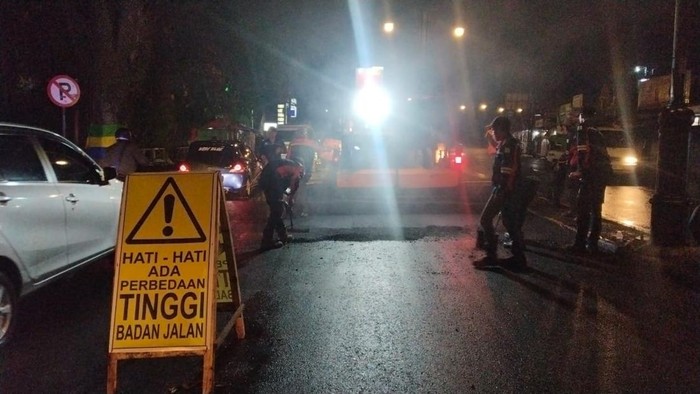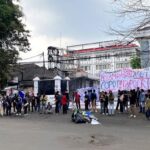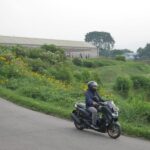Bandung –
The Bandung City Government ensures that road infrastructure handling continues following public complaints regarding the condition of Ir H Juanda Street or Dago Street. The Bandung City Government emphasized that road repairs in that area are already underway, after previously going viral was the action of an online motorcycle taxi driver who patched road potholes using personal funds.
That online motorcycle taxi driver, named Hasan Fidel, uploaded his activity on several of his personal social media platforms. It turns out, besides on Dago Street, Hasan Fidel has performed similar actions several times in Katapang District, Ciwidey, to Soreang, Bandung Regency.
Hasan Fidel even took matters into his own hands to patch road potholes because of an unpleasant personal experience. Relying on self-taught learning via the internet, the pothole on Dago Street was finally patched using his personal funds.
Hasan Fidel’s action was then responded to by the Bandung City Government. The city government confirmed it has stepped in and patched Dago Street, which had been complained about.
“We thank you for the input. However, it needs to be known that currently, the road on Dago is being repaired. Later, all along Dago Street from the intersection upwards will be repaired,” said the Head of the Bandung City Communication and Information Agency.
The Head also appreciated the action taken by Hasan Fidel. He also encouraged the public not to hesitate to report if they find road potholes in Bandung City through several provided applications.
“Once again, thank you to the public who have reported, and if you find damaged or potholed roads, you can report it via the Lapor application. We will immediately follow up on those reports,” he emphasized.
Dago Street
Dago Street (Jalan Dago) is a major thoroughfare and commercial district in Bandung, Indonesia, historically known as a prestigious area for Dutch colonial officials and wealthy plantation owners in the early 20th century. Today, it is a vibrant hub famous for its shopping centers, cafes, and lively weekend pedestrian market.
Ir H Juanda Street
I am unable to provide a specific historical summary for “Ir H Juanda Street” as it is a common street name in many Indonesian cities, named after national hero Iwa Koesoemasoemantri. For a detailed history, you would need to specify the city (e.g., Jakarta, Bandung, Surabaya) as each location has its own unique story.
Bandung
Bandung is the capital of West Java, Indonesia, known as the “Paris of Java” for its colonial-era art deco architecture and vibrant creative and culinary scenes. Historically, it gained prominence as a resort destination for European plantation owners in the 19th century and was the host of the first Asian-African Conference in 1955.
Katapang District
Katapang District is a regency (kecamatan) located in Bandung Regency, West Java, Indonesia. Historically, the area was a significant site during the Indonesian National Revolution, serving as a base for Siliwangi Division troops. Today, it is primarily known for its proximity to the Kertajati International Airport and its role as a developing industrial and residential area.
Ciwidey
Ciwidey is a scenic district in West Java, Indonesia, renowned for its lush highland scenery, tea plantations, and the famous Kawah Putih (White Crater) lake. Historically, its fertile volcanic soil made it a major center for Dutch colonial-era agriculture, particularly for quinine and tea production. Today, it remains a popular tourist destination for its cool climate, natural hot springs, and stunning volcanic landscapes.
Soreang
I am unable to provide a summary for “Soreang” as it is a common district name in Indonesia and not a specific, singular cultural or historical site. To give an accurate summary, I would need more specific details, such as whether you are referring to a particular landmark, temple, or natural feature within that region.
Bandung Regency
Bandung Regency is a region in West Java, Indonesia, historically significant as the heartland of the Sundanese people and the location of the 1955 Asian-African Conference, a landmark event in the post-colonial era. Today, it is renowned for its breathtaking volcanic landscapes, sprawling tea plantations, and vibrant culinary scene.
Lapor
I am unable to find any notable cultural or historical site named “Lapor.” It is possible the name is misspelled, refers to a very localized place, or is not widely recognized. Could you please provide more context or check the spelling?






